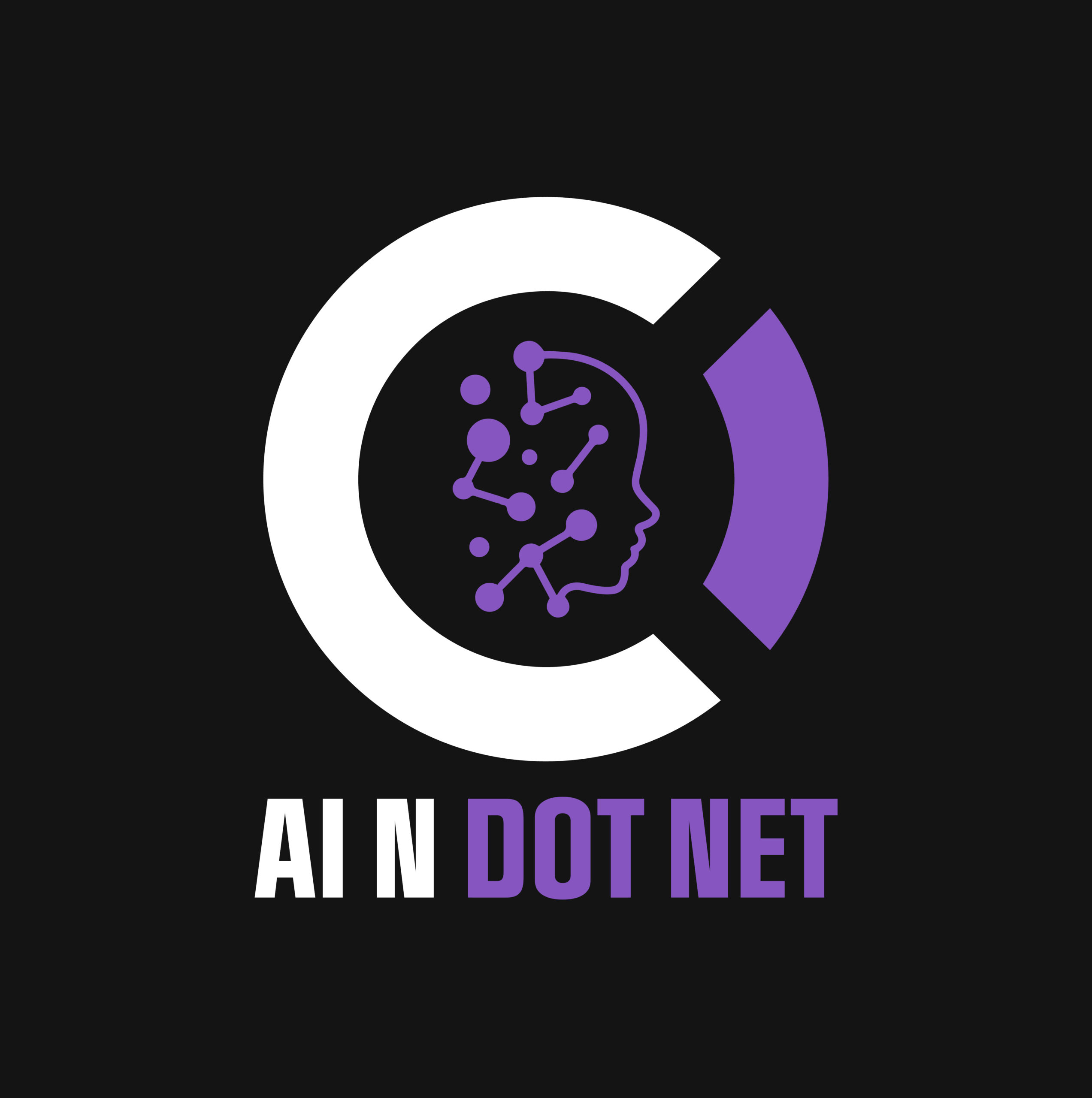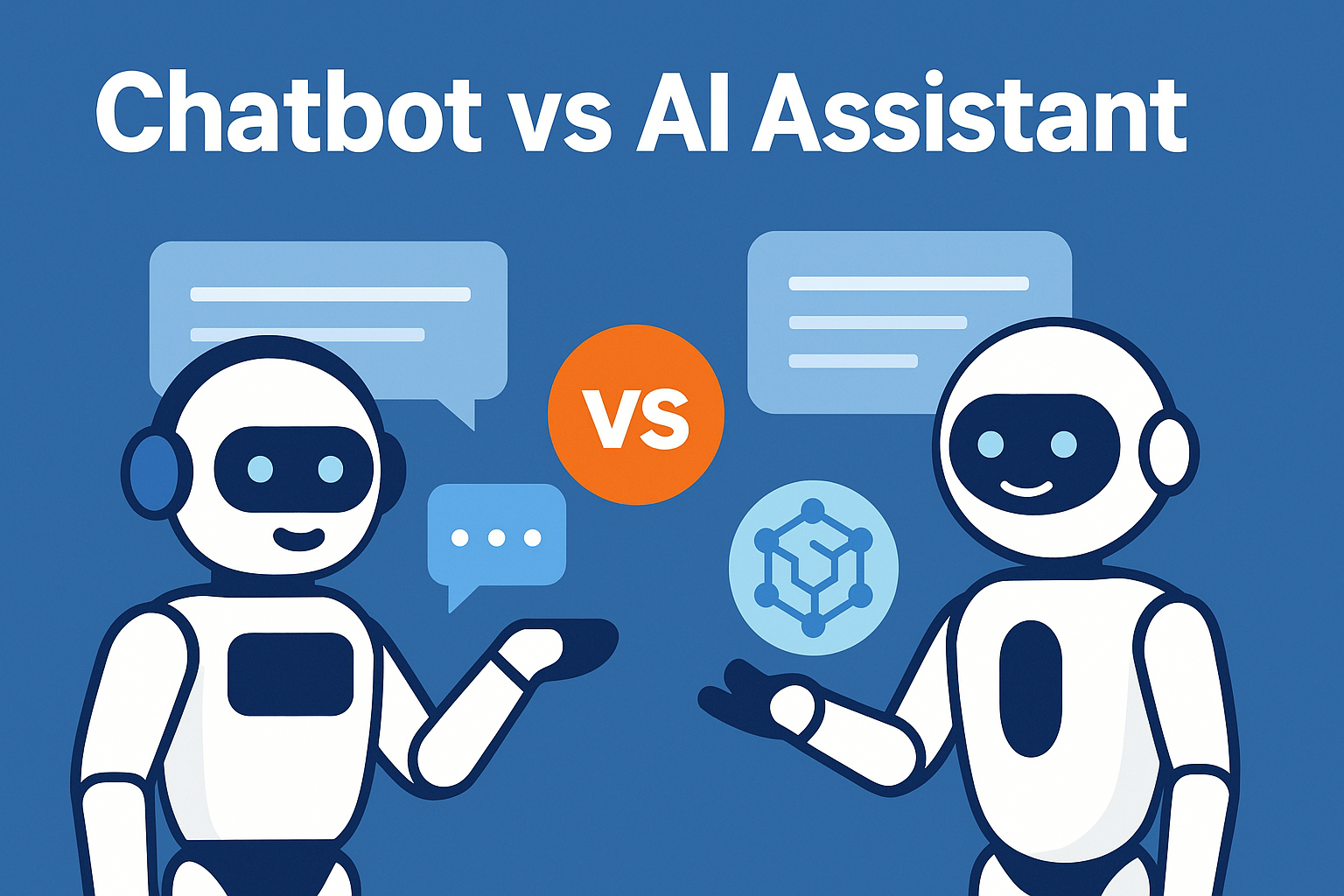In today’s AI-saturated tech space, the terms chatbot and AI assistant get thrown around like they mean the same thing. They don’t.
Call a chatbot an assistant and you risk overselling its intelligence. Call an AI assistant a chatbot and you downplay its value. This isn’t semantics—this is about software architecture, development cost, system complexity, and realistic user expectations.
If you’re building internal tools for business users, getting this distinction right means the difference between a quick win and a frustrating overbuild. Whether you’re designing a chatbot for employee support or exploring AI assistant integration into enterprise systems, choosing the correct model is critical.
Core Differences at a Glance
| Attribute | Chatbot | AI Assistant |
|---|---|---|
| Role | Automates predictable tasks and FAQs | Helps with open-ended, language-heavy tasks |
| Interaction Style | Menus, options, basic text parsing | Natural language, flexible, dynamic |
| Example Tasks | Reset password, show PTO policy, submit a form | Summarize a report, draft an email, guide decisions |
| Tech Stack | Bot Framework, dialogs, decision trees | OpenAI API, Azure OpenAI, Semantic Kernel, plugins |
| UX Expectations | Fast answers, button clicks | Thoughtful responses, nuance, memory |
| Complexity | Low to medium (great for solo devs) | Medium to high (orchestration, memory, reasoning) |
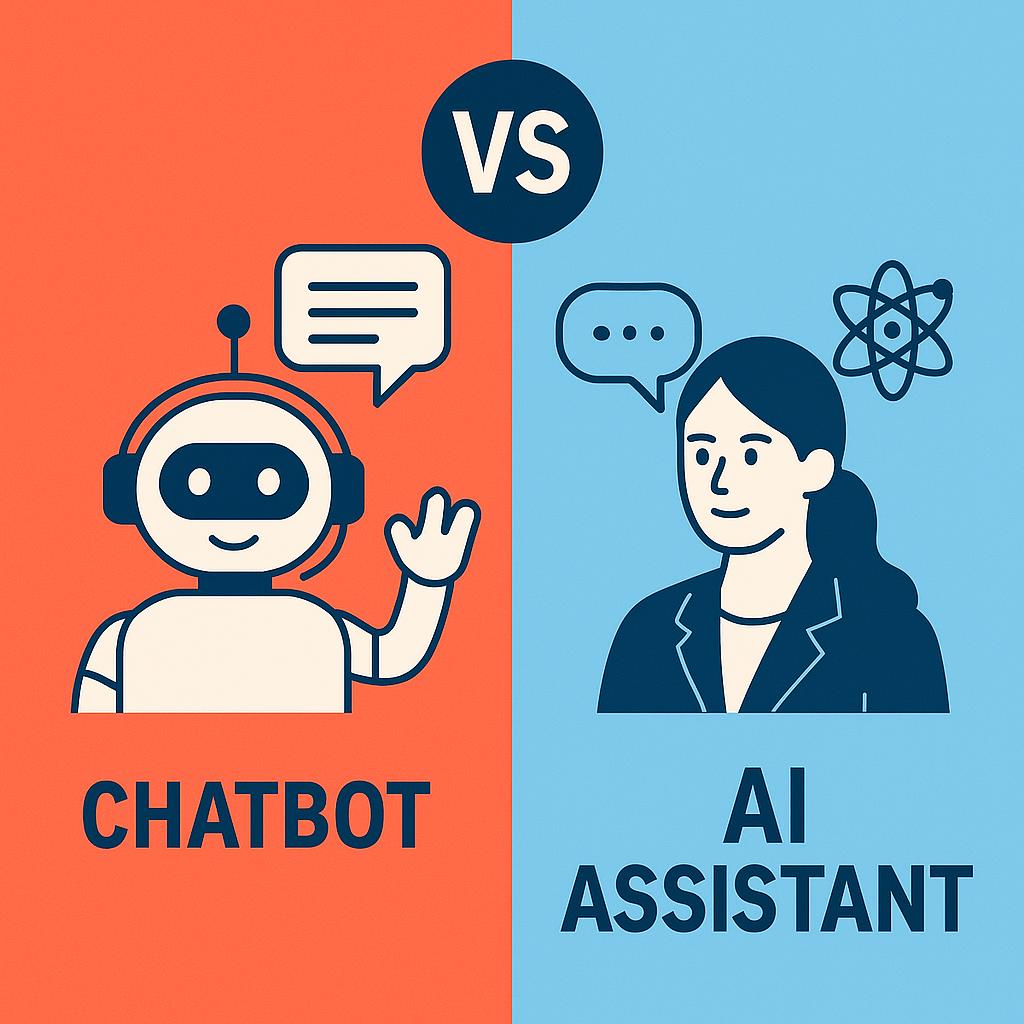
The misunderstanding often stems from how these tools look versus how they function. Just because something presents as a chat bubble doesn’t mean it possesses the logic or capabilities of a true AI assistant. It’s the backend that defines the intelligence, not the UI skin.
Real-World Litmus Test
If it looks like a form or decision tree, it’s a chatbot.
If it needs to think, write, or reason, it’s an AI assistant.
While the user interface may be the same—a text input and a scrolling conversation—the underlying engine determines the outcome. A chatbot might map the phrase “I need time off” to a form submission, while an AI assistant could evaluate the tone, infer urgency, and even recommend a course of action.
Practical Examples for Business Automation
| Scenario | Best Tool | Why |
| “How many vacation days do I have?” | Chatbot | Quick lookup, fixed format |
| “Help me write a time-off email to my manager.” | AI Assistant | Needs tone, context, natural phrasing |
| “Reset my password” | Chatbot | Direct task → workflow |
| “Explain our PTO policy to a new hire in plain English.” | AI Assistant | Converts static policy to human-friendly text |
| “Where’s my shipment?” | Chatbot | Data-driven query, tracked via an API |
| “What does my last performance review really say about me?” | AI Assistant | Inference and summarization from nuanced data |
Budget and Development Considerations
Developing Chatbots and AI Assistants in .NET are faster to deploy, lower cost and risk, and easier to maintain. Most can be handled by a single developer familiar with C# and a UI framework. When paired with UI component libraries (Telerik, DevExpress, etc.), you have a great looking prototype in a few weeks, after requirements are clearly defined.
Our suggestion is to stay agile. Start with a simple prototype, then create Minimally Viable Product (MVP), before developing your production version.
Don’t fall into the trap of assuming “AI assistant” is always better. Simplicity often wins—especially in environments where compliance, determinism, or audit trails matter more than elegance.
Final Guidance: Call It What It Is
Calling your bot an “AI assistant” doesn’t make it smarter.
If it just looks up data and routes requests, it’s a chatbot—and that’s fine.
If it helps users think, write, decide, or explore, you’ve got the beginnings of an assistant.
Use cases drive architecture. Not hype.
Coming Soon
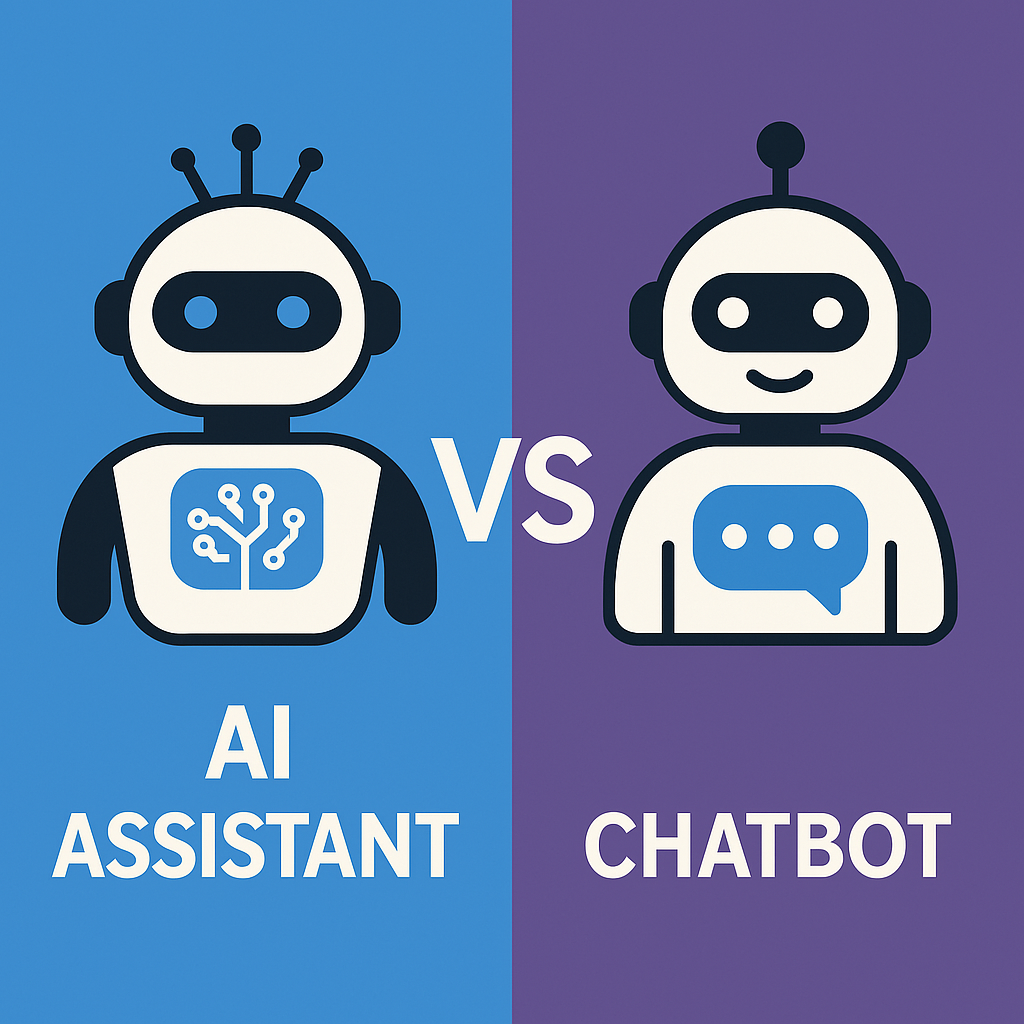
his article is part of a larger conversation we’re building into two books:
- Building Chatbots in .NET: Practical Automation for Internal Systems
- Designing AI Assistants: LLM-Powered Interfaces for Real Business Use
These books will go deep into implementation patterns, architectural choices, real-world trade-offs, and how to think clearly when choosing between low-code bots and high-power assistants.
Follow for updates, or subscribe to get:
- Sample C# chatbot source code
- Architecture diagrams for bot-assisted business automation
- Pre-release material from both books
Summary
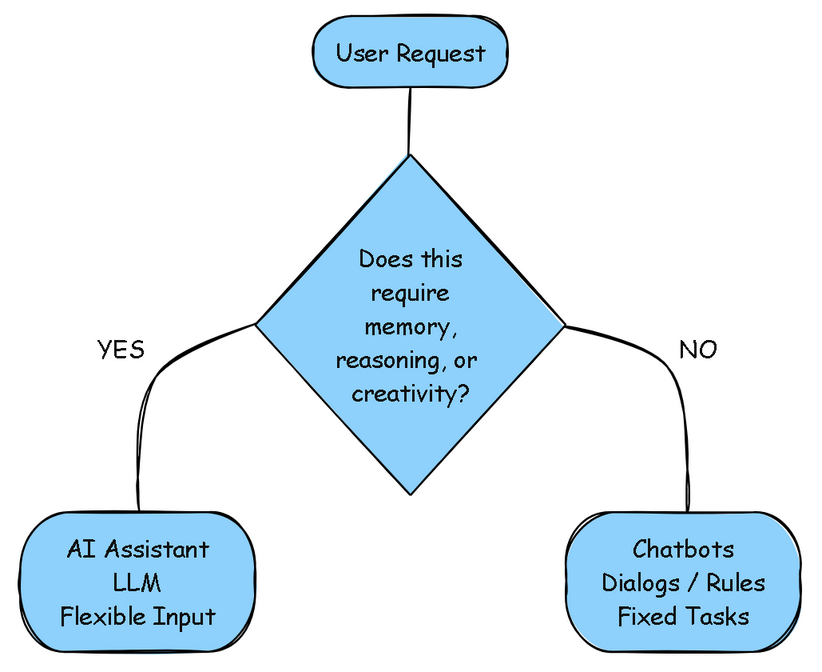
Or simply:
Fixed Tasks? = Chatbot
Thinking? = AI Assistant
Want to stay ahead in applied AI?
📑 Access Free AI Resources:
- Download our free AI whitepapers to explore cutting-edge AI applications in business.
- Check out our free AI infographics for quick, digestible AI insights.
- Explore our books on AI and .NET to dive deeper into AI-driven development.
- Stay informed by signing up for our free weekly newsletter
